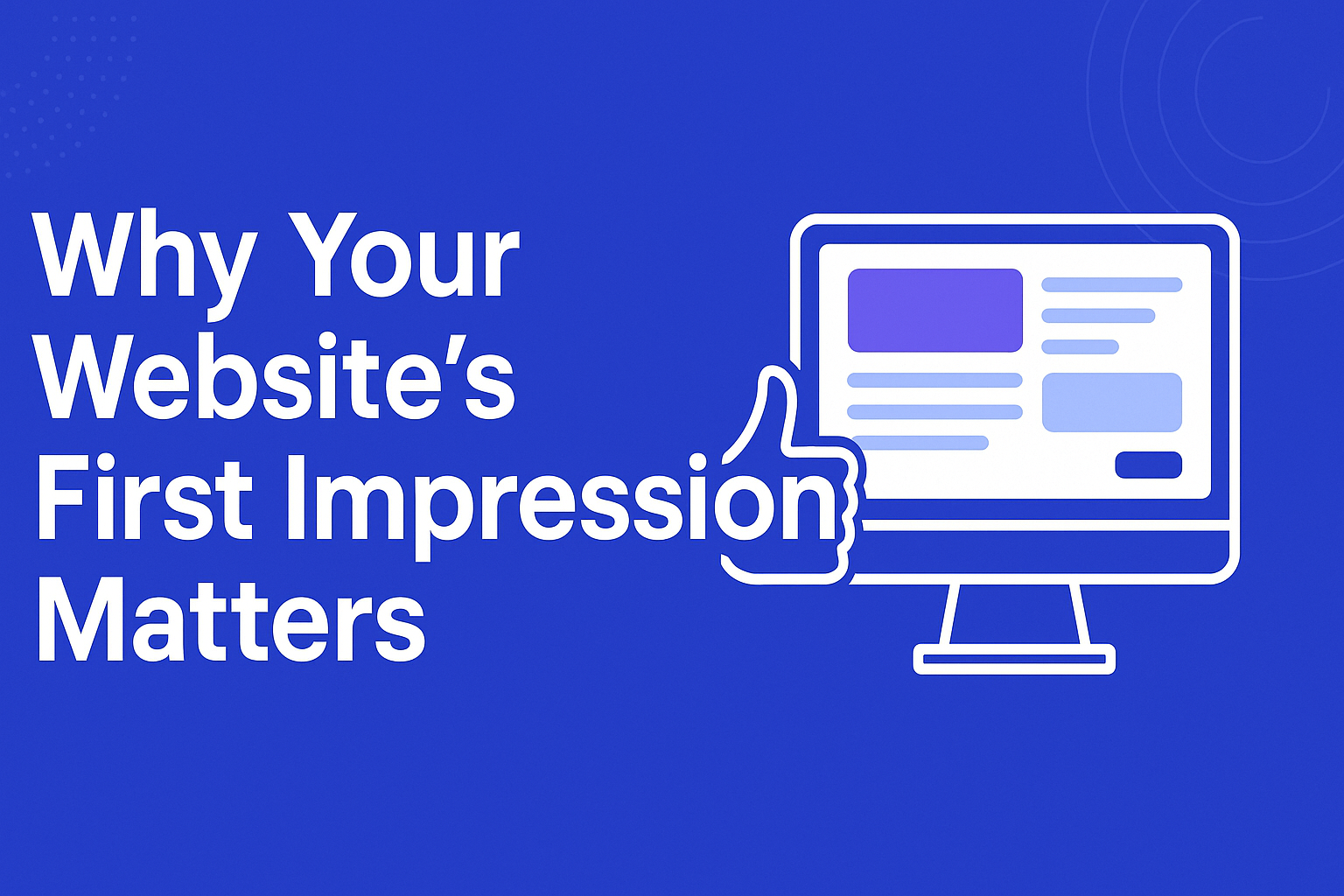You never get a second chance to make a first impression—especially online. Studies show users form opinions about a website in less than 0.05 seconds. That instant judgment influences whether they stay, scroll, or bounce. In a world where attention spans are shrinking and competition is just one click away, your homepage has to do more than load fast—it has to connect.
In this post, we explore why your website’s first impression is so important and how you can design for impact, trust, and action.
The Psychology of First ImpressionsFirst impressions happen quickly—and they’re hard to reverse. Our brains process visuals faster than text, which means things like layout, color, spacing, and imagery send subconscious messages before visitors read a single word.
Research shows users judge a website’s credibility based 75% on design. That means your layout, font choices, imagery, and color palette communicate value, professionalism, and trustworthiness almost instantly.What Users Notice First on a WebsiteHere’s what most users unconsciously scan in the first 3–5 seconds:
Overall layout and structure
Color scheme and contrast
Logo and brand identity
Main headline or slogan
Navigation/menu clarity
Hero image or background visual
Call-to-action (CTA) button or direction
If these elements are confusing, outdated, or inconsistent, users may bounce before engaging further.
Common First Impression MistakesMany websites lose users within seconds due to avoidable issues:
Cluttered design with too many elements competing for attention
Slow loading speed, especially on mobile
Generic stock imagery that lacks personality
Unclear messaging—no idea what the site is about
Poor navigation or hidden menus
Inconsistent branding between visuals and tone
How to Make a Powerful First ImpressionHere are key strategies to ensure your website makes a lasting positive impact:
Prioritize Simplicity: A clean layout makes your site easier to digest. Use white space effectively.
Use Strong Visual Hierarchy: Guide users’ eyes to the most important elements (logo, headline, CTA).
Load Fast: Speed affects both perception and SEO. Aim for under 2 seconds.
Consistent Branding: Align fonts, colors, logo use, and tone across all elements.
Engaging CTA: Make sure your call to action is clear, bold, and visible above the fold.
Mobile Optimization: Your mobile homepage needs just as much polish as desktop.
Why Mobile First Impressions Matter Even MoreMost users visit websites on mobile devices. If your mobile site is hard to read, slow, or misaligned, visitors will leave without a second thought. Responsive design and mobile-optimized layouts are non-negotiable in 2025.
How I Design for Strong First ImpressionsWhen I design a website, I focus on creating a powerful user experience from the very first glance. That means:
Using a clean, brand-aligned layout
Optimizing loading speed and mobile responsiveness
Crafting a headline that speaks directly to the user
Designing clear navigation and bold calls-to-action
Every site I build starts with a clear goal: make visitors trust you in seconds.
Conclusion: Design the Experience You Want to DeliverYour website’s first impression shapes how users perceive your brand—and whether they stick around. A few strategic design choices can be the difference between a bounce and a conversion.
If you’re not sure what impression your site is making, it might be time for a redesign or audit. Let’s work together to create a homepage that actually works.
FAQsQ: How fast do users form an opinion about a website?A: In under 50 milliseconds (0.05 seconds), users begin judging the site visually.
Q: What’s the most important part of a homepage?A: Your headline and hero section—they define the purpose and tone instantly.
Q: Can I test my site’s first impression?A: Yes! Use user testing tools, heatmaps, or session recordings (e.g., Hotjar, UsabilityHub) to analyze user reactions.

